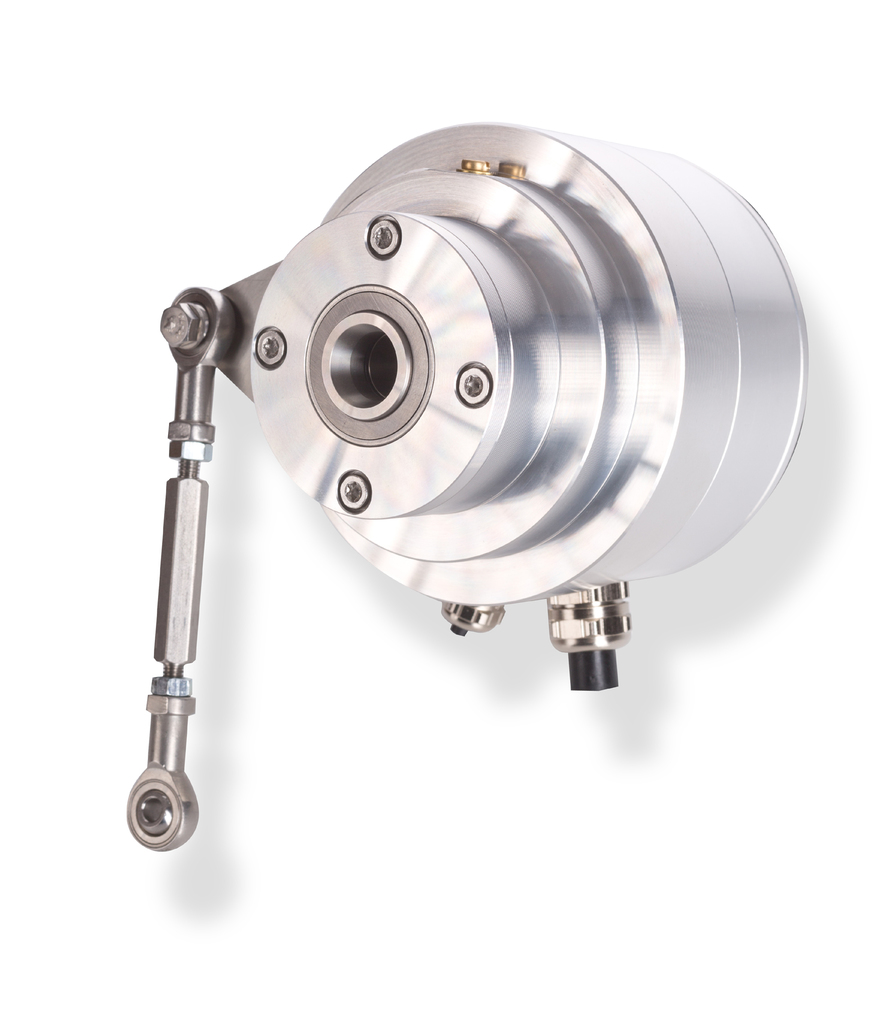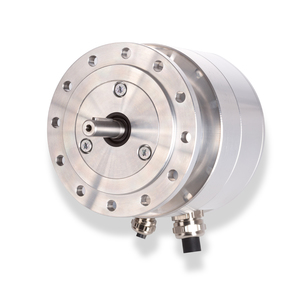
 |
Charlotte Stonestreet
Managing Editor |
| Home> | DRIVES & MOTORS | >Encoders | >Incremental encoder |
Incremental encoder
08 June 2015
Specialist for customised encoder solutions in heavy industry, Johannes Hübner Fabrik elektrischer Maschinen now offers an incremental encoder for standard motors, auxiliary drives and secondary drives in the form of its FG(HJ) 2.

The FG(HJ) 2 not only combines the customary benefits of Huebner devices such as a long service life and high levels of reliability, it also meets the technical requirements of machines operating in normal environments. Diverse additional options and a generously designed terminal box offer the user even greater freedom when it comes to configuring and installing their application solutions.
The encoder is offered for standard motors as a solid shaft construction (FG 2) and hollow shaft construction (FGHJ 2) for a variety of shaft diameters. Due to its large ball bearings with a high dynamic load rating the latter guarantees a long service life and high levels of availability.
Consisting of components made of technical ceramics the hybrid bearings of the FGHJ 2 insulate the bearing assembly by interrupting possible shaft currents on the machines. Otherwise, they could damage the encoder bearing assembly. Without this ceramic insulation the user would have to make provision to insulate the encoder when installing.
The shaft made of stainless steel, a robust and thick-walled casing as well as speeds up to 7000 rpm (solid shaft) and 6000 rpm (hollow shaft) are further factors that ensure the high level of reliability of the encoder.
In addition to the incremental output this solution allows users to choose between several options to fit their needs. With its option S Johannes Huebner Giessen offers the possibility to add an additional electronic overspeed switch to facilitate precise monitoring of speed at the machine.
The FOC option contains an integrated transmitter to convert electrical signals to optical signals. That means the encoder is ideally prepared to provide interference-free signal transmissions via fiber optic cable. Users are able to connect the fiber optic cable directly in the terminal box of the encoder; a feature that saves the need for an external transmitter.
Featuring designed-in redundancy the option AKK offers a dual pulse output with second scanning as well as double electronics. As a consequence it is possible to distribute the output signal to different levels of the automation solution. That in turn means there is no need for a separate output multiplier.
- SIL-CL3 absolute encoder
- Designed to easily implement safety functions
- No Time Lost In Fault Rectification
- Greater Flexibility In Heavy-Duty Applications
- Absolute encoder now more robust
- Advances In Magnetic Encoders
- Modular MAG system
- Explosion protection
- Overspeed switch
- No Bearings or Housing Needed



















